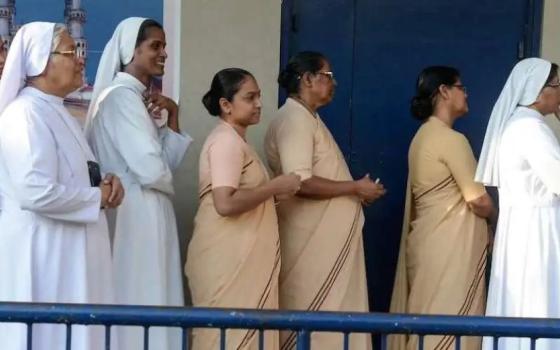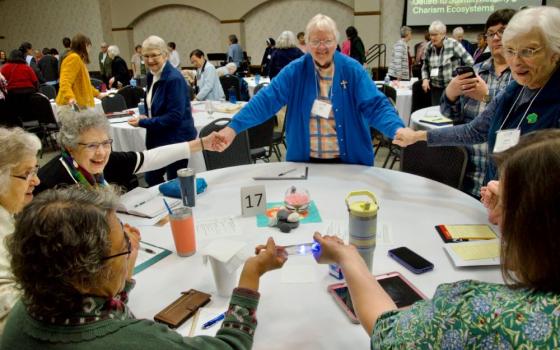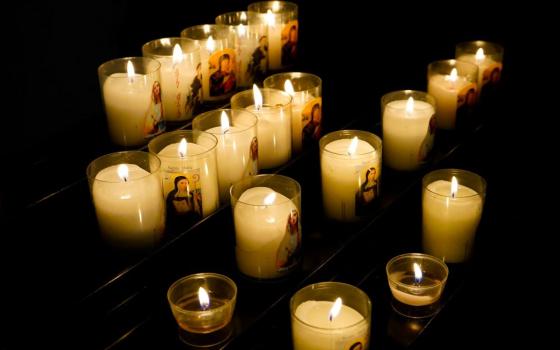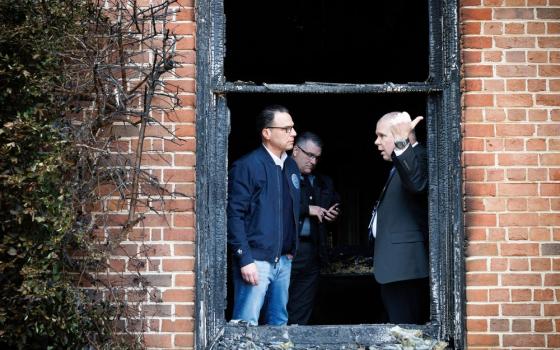
(GSR illustration/Olivia Bardo)
"Evolving Religious Life," a continuing series from Global Sisters Report, explores how Catholic sisters are adapting to the realities of congregations in transition and new forms of religious life. While we write often about these trends, this particular series will focus more closely on sisters' hopes for the future.
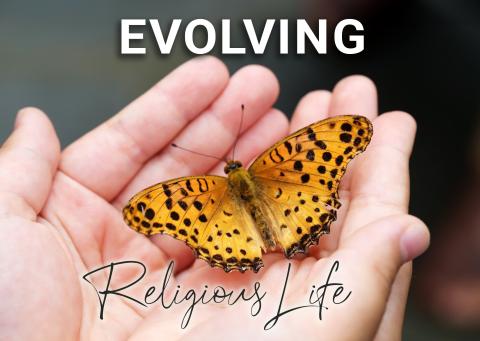
When the Ursuline Sisters of Louisville, Kentucky, approached their associates' leadership in 2021 about the group becoming more independent, the associates were struck with fear and confusion.
"People thought we were separating from the associates," said Sr. Agnes Coveney, a member of the congregation's leadership team and its liaison to the associates, which are lay people spiritually connected to congregations of women religious. "We had to assure sisters, we had to assure associates."
Each congregation's associate program is unique, and they can be called associates or oblates or several other names, but in each case they are made up of nonconsecrated people who have made a public commitment — as opposed to the vows religious take — to a religious institute. Though associates live secular lives, they are sometimes deeply attached to their congregations through relationships that can go back decades.
So when the Ursuline associates heard "independent," they were afraid they were being left on their own.
"It felt to some there was a walking away" by the sisters, said Lisa Steiner, a member of the associates' leadership team. "One person said the sisters hadn't given us permission to carry the charism, but the sisters said, 'It's not ours to give; we don't own it. It's bigger than all of us.' "
Advertisement
Today, both the sisters and associates see the move as a gift. Though they will be spiritually attached to the sisters, they will be led by their own chosen leaders and make their own decisions on things such as mission activities and the structure of their organization.
"The relationship has evolved from the sisters being matriarchal to independent, empowered lay people," Coveney told Global Sisters Report. "We wanted to foster that maturity."
Steiner said that before the change, whenever there was a decision to make — such as when and where to hold a retreat — "we would automatically defer to the sisters."
Lauren Hitron, another member of the associates leadership team, said the sisters are still involved in almost everything the associates do — except their planning for the future. The sisters offered the help of an outside facilitator for that planning, but they wanted the associates to map out their own road forward.
It's a process that congregations of religious, both women and men, are undertaking across the United States: As the number of sisters goes down, many are asking what will happen to their associates once the sisters cannot lead them anymore or if the congregation no longer exists.

Associates of the Ursuline Sisters of Louisville make sandwiches for the homeless in Louisville, Kentucky. (Photo courtesy of the Ursuline Sisters of Louisville)
A national dilemma
It's a question made harder to answer by the disappearance of the North American Conference of Associates and Religious in 2021, which offered resources and support to associate groups. The conference went out of existence because of a lack of finances and volunteers.
But the lack of a national group has been made up for by regional groups, such as the Ohio-Pennsylvania Associate Leadership program, or OPAL, which includes 15 associates groups, mainly in Ohio and Pennsylvania. Two of the members are orders of religious men.
Sr. Margaret Taylor, congregational leader of one of OPAL's members, the Sisters of the Incarnate Word and Blessed Sacrament in Cleveland, said all of the group's members are looking at the same phenomenon: Numbers of sisters declining to the point where hard questions about their associates need to be answered.
In 2019, it appeared that if then-current trends continued, the number of associates would surpass the number of sisters in the United States within a few years, but no one knows how many associates there are now.
Though every situation is different, in general when the number of sisters is declining, the answer for what to do with the associates is to grant more independence.
"We just had the 40th anniversary of our associates, and they're going through a lot of angst over the same things," Taylor said. "It's very bittersweet because it's been a long-term relationship, but we know we cannot continue to lead it."

Associates of the Ursuline Sisters of Louisville meet at an associates meeting in February 2024. (Photo courtesy of the Ursuline Sisters of Louisville)
In some ways, it's not much different than a congregation spinning off a sponsored ministry. But spiritually, any separation can be fraught.
"Our associates are beginning to realize the sisters will not always be here, but they want to live with hope," Taylor said. "It's tough. It's tough for us as sisters, too."
Sr. Christine Ereiser, the director of oblates for the Benedictine Sisters of Tulsa, said their program was restructured so the oblates are taking on more of the group's leadership, though Ereiser is still involved and another sister leads formation for the group.
"I think there's a fear that we're just going to kind of spin them off to be on their own," Ereiser said. "But they have tremendous leadership skills and many different talents, and they can certainly use those."
And many different talents will be needed: If a congregation comes to completion, the associates group will likely need to have its own civil, nonprofit corporation. Questions of finances, organization and even things such as where to meet will all have to be decided.
Taylor said that is why groups such as OPAL are so important: They are a source of information and advice from groups that have already been through the process, or a source of support from those in the midst of it.
"This group may be small, but they are mighty," Taylor said of OPAL. "We look at it as the evolution of religious life."
Of course, not every associate program is thriving. Many have median ages similar to those of their congregation and few or no new members. An associate group on the road to completion at the same time as its community of religious presents a whole new set of questions.
A 2016 study commissioned by North American Conference of Associates and Religious found that 71% of associates were between ages 60 and 79, and the percentage of associates in their 30s and 40s dropped from 21% in 2000 to 5% in 2015. Nearly 80% of sisters in the United States were 70 or older at the time.
'We belong together spiritually'
One of the events that spurred the Louisville Ursulines into action was the retirement of the director of associates. She had been a layperson for years, but she was also an employee of the congregation; her retirement made it prudent to examine the structure of the relationship.
The group turned to Steiner, who has a background in organizational development, and after listening sessions and many discussions, they decided to have a three-person team where each one would focus on an area of expertise: Steiner would oversee community, Hitron would oversee capability — things such as email lists and databases — and Jane Cruthirds, who has a background in formation, would oversee charism.
Though a lot of effort went into practical matters such as organizational structure, associates also reminded them of why they joined the group in the first place.
"People told us the reason they became associates was they were hungering for a spiritual connection," Steiner said. "We belong together spiritually."

Associates of the Ursuline Sisters of Louisville pray in the congregation's chapel at an associates meeting in February 2024. (Photo courtesy of the Ursuline Sisters of Louisville)
Some lay people are called to be associates when they're searching for a deeper spiritual life; others want to make a bigger contribution to the church or minister in some way, but have spouses and children that prevent them from joining vowed life; sometimes they are former sisters who left a congregation but still have an emotional and spiritual bond.
The question of finances hasn't been answered yet, Coveney said, and they are not a separate civil corporation, but those decisions will likely be made at the congregation's general chapter in 2026.
"We did the heart and spiritual things first," which was possible because "the Ursuline sisters have been good planners," Coveney said.
Conni Dubick, an associate with the Dominican Sisters of Peace and a former president and board member of North American Conference of Associates and Religious, said that while associate groups can learn from each other, each must also choose its own path, the way each individual associate must.
"Dominican Associates of Peace treasure our relationship with the Dominican Sisters, but our calling is also unique to each of us to live as Dominican lay women and men," Dubick told GSR in an email. "I believe that each of us as associates must continue to identify the several ways that we can best be a … presence in unison with our sisters through our own daily lives at work, with family, with church, and in society."

